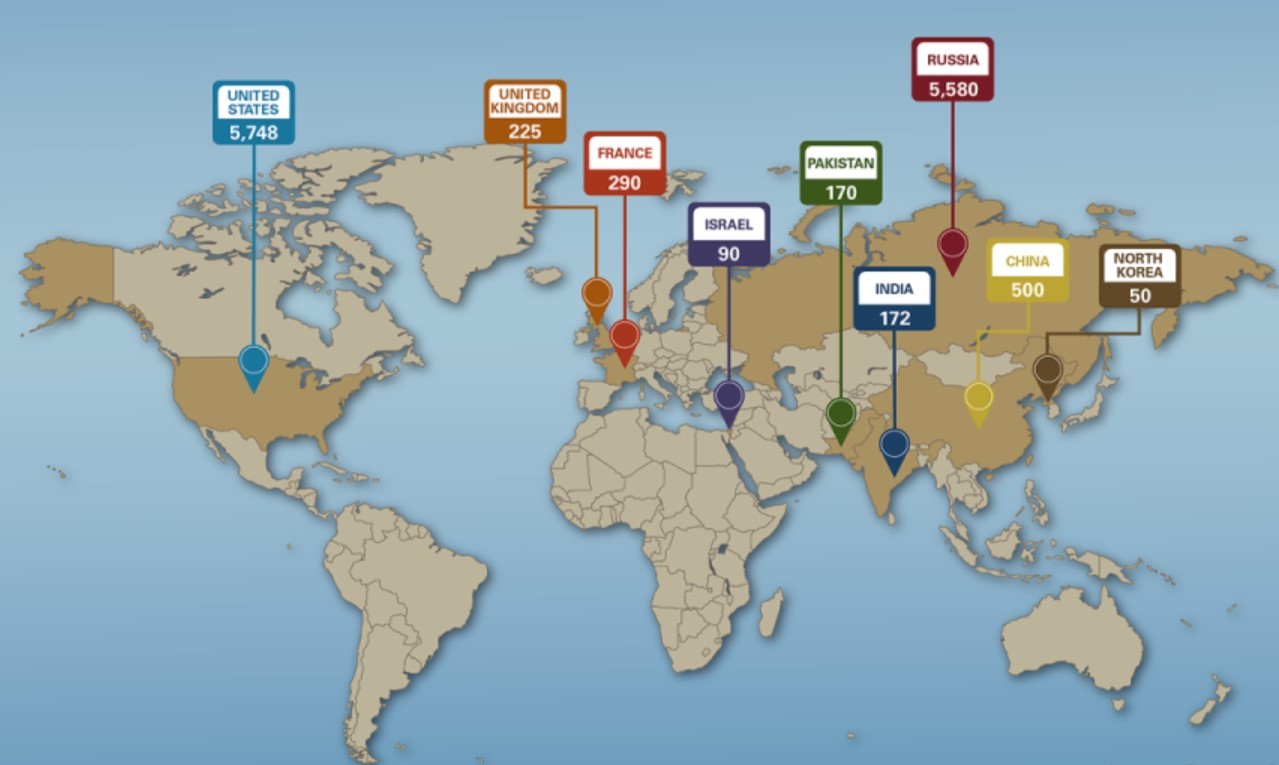Why Is US Military The Strongest In The World?
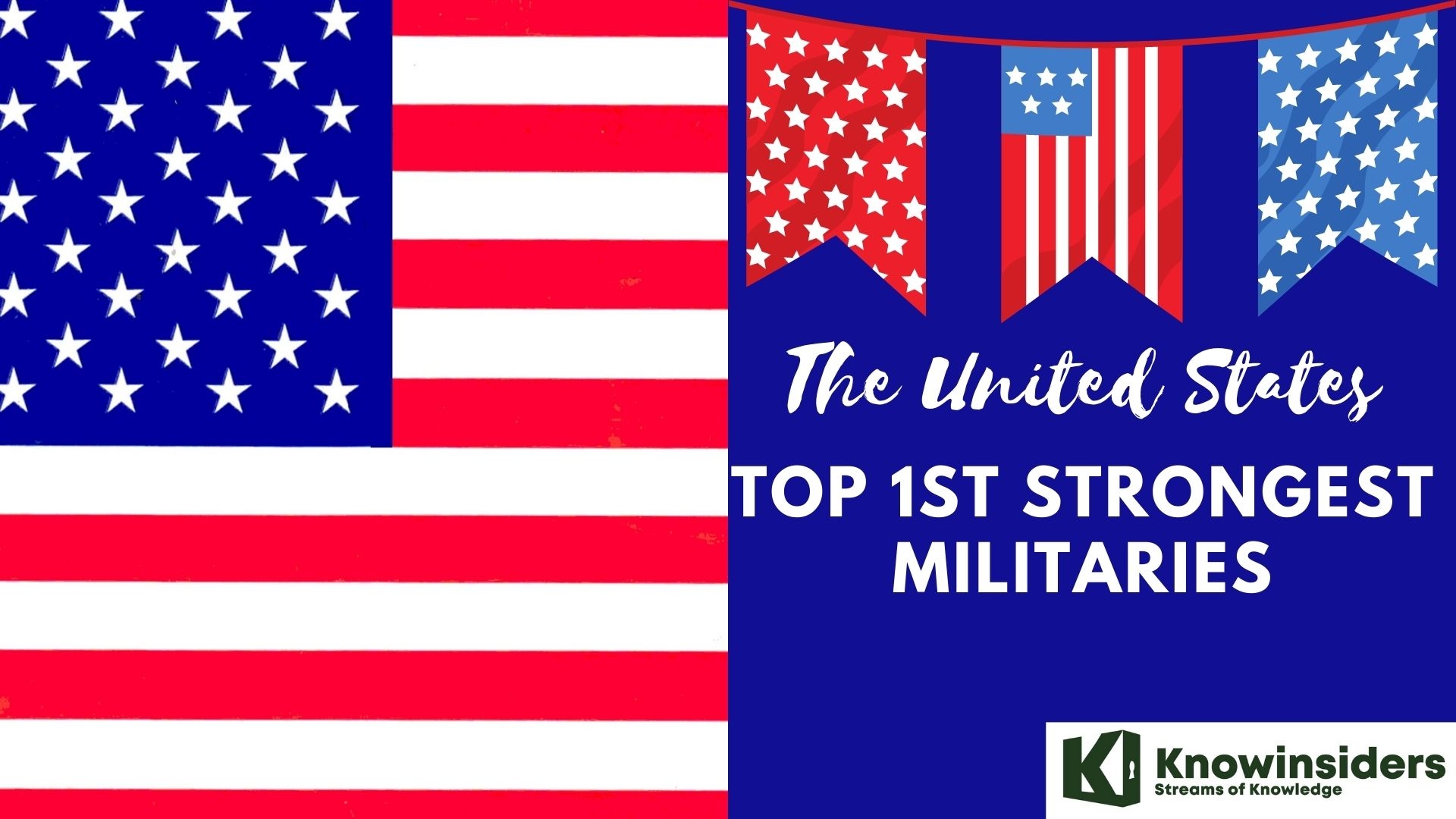 |
| United States Army - Top 1st Strongest Militaries |
| Table of Contents |
The armed forces of the United States of America are known as the US Armed Forces.
The Army, Marine Corps, Navy, Air Force, Space Force, and Coast Guard are the six service branches that make up the United States armed forces.
As the commander-in-chief of the armed forces, the president of the United States formulates military policy, which is primarily carried out by the federal executive departments of the Department of Defense (DoD) and Department of Homeland Security (DHS). Among the eight uniformed services of the US are the six armed services.
Examine the history, might, and capabilities of the US military, which ranks first in the world.
Read more: How Many Troops Are There in the U.S. Military: Statistics And Facts
Facts About 'American Military Dominance'
President Barack Obama promised to "maintain America's military dominance and keep you the best fighting force the world has ever known."
George W. Bush, the president, said, "Our forces will be strong enough to dissuade potential adversaries from pursuing a military build-up in hopes of surpassing, or equaling, the power of the United States."
The president of the United States said: "Today our Armed Forces are clearly and without dispute the best trained, the best equipped, the best prepared, and the best motivated military on the face of the Earth."
Evidence of American Military Dominance
The United States has the world's largest military budget
The first and most frequently cited reason Americans are confident in their military is defense spending. In 2016, the United States spent $596 billion on defense, $19 billion more than the next seven most prolific countries, who spent $567 billion each. When asked directly, few people would argue that increased funding guarantees military victory.
In fiscal year 2019, $693 billion in funding was appropriated for the DoD and "Overseas Contingency Operations" in the War on Terror. Aside from direct DoD spending, the US spends an additional $218 to $262 billion per year on defense-related programs such as Veterans Affairs, Homeland Security, nuclear weapons maintenance, and DoD.
In FY2016, $146.9 billion was allocated to the Army, $168.8 billion to the Navy, $161.8 billion to the Air Force, and $102.8 billion for DoD-wide spending. By function, $138.6 billion was requested for personnel, $244.4 billion for operations and maintenance, $118.9 billion for procurement, $69.0 billion for R&D, $1.3 billion for revolving and management funds, $6.9 billion for military construction, and $1.3 billion for family housing.
Unfortunately, defense spending is not directly related to military effectiveness. Operational and strategic proficiency are more important than tactical proficiency, though less directly related to defense spending. It is also difficult to compare American military spending to other countries because the United States spends a disproportionate amount on personnel costs.
Military’s tough, realistic training
The military's rigorous, practical training is another—and possibly more valid—reason for American confidence.
Not all possible enemies of the United States have access to training facilities and drills as intense as Red Flag, combat training centers, or some of the country's major naval exercises. Rotations through combat training centers end with units leaving more assured and ready for deployment than when they arrived. Even strenuous exercises don't guarantee success, despite their advantages. Military forces must forecast future combat scenarios in order to reap the benefits of training, but this is an infamously challenging and unreliable task. Combat effectiveness is the only metric that can accurately determine the value of training; it is not possible to predict combat effectiveness in advance of future conflicts.
Large, well-equipped forces
Few states can match the kind of power that large, well-equipped forces with the capacity to project force globally can offer. However, the comparison of conventional military power is uncertain because history shows no indication that American military might translates into true dominance of adversaries. To suggest that Americans frequently join large coalitions in battle against worn-out or feeble adversaries and then recall themselves as global warriors would be an exaggeration.
Fact-Check 'American Military Dominance'
For decades, people have continued to believe that the U.S. military is superior in a number of different domains. The majority of Americans study the history of US military supremacy.
According to Gallup polling, the majority of Americans thought that the US military was the best in the world for the previous thirty years. All the experts and leaders mentioned above spoke from a common understanding of the nature of global military power, but they did so in good faith. This belief merits more investigation because it is based on a poorly considered narrative.
The majority of Americans study the history of US military supremacy.
Tales of victory in two global conflicts, an unfair battle in the initial Gulf War, and swift incursions into both Iraq and Afghanistan bolster the notion that for the majority of the 1900s and a significant portion of the current 21st century, the United States has emerged as the inescapable winner whenever its adversaries are bold enough—or perhaps naive enough—to confront it in conventional warfare.
A narrative of US military superiority finds little overt support in history.
Despite not being the main combatant in either of the two World Wars, the United States contributed significantly to both. In both wars, Americans fought valiantly, made great sacrifices, and changed the course of history—but they did so as members of expansive coalitions with other strong nations, not as a military superpower destroying its adversaries.
The American military in World War I turned the tide of battle against Germany, but it lacked the industrial or military might to control the Western Front. Rather, a greater burden was placed on the militaries of France, Britain, and Russia. Whether gauged by the quantity of Call of Duty games that feature the war or by the recent commemoration of D-Day anniversary, it is arguable that World War II had a far greater influence on the American narrative. Nonetheless, other countries' efforts are frequently overlooked in the story of American involvement in the "good war."
While the United States was heavily involved in North Africa, Italy, France, and the Pacific during World War II, the Soviet Union was able to destroy the majority of the Nazi military and vanquish Japan's most powerful ground force, the Army of Manchuria.
Though they are not as frequently portrayed as a time of military domination, the 1950s through the 1970s nevertheless have an impact on how Americans view their military. It's rare to hear about the Korean War. When it does, the narrative is dominated by tales of Chinese human-wave tactics rather than portrayals of a standoff at the theater level against an enemy who occasionally possesses slight numerical advantages. Most people characterize the United States' struggle in Vietnam as a dark chapter in an otherwise glorious history. Vietnam is seldom a sobering reminder of the boundaries of US military might, but rather a side story about the risks and annoyances of dealing with nonconventional forces. That story is used to show that the American military has so much conventional power that its opponents may decide to fight as insurgents rather than oppose American conventional dominance.
In the 1970s, defense planners thought that even with America's formidable nuclear arsenal and conventional military might, the country would not be able to defeat the Soviet Union's ever-improving forces. It was thought by the planners that Soviet armor could breach NATO defenses quickly, destroy tactical nuclear weapons, "and prevent NATO from mounting a nuclear defense altogether." The ensuing operational, doctrinal, and technological changes—known as the "second offset"—formed the armed forces that participated in the first Gulf War.
Whatever doubts were raised by the Korean and Vietnam Wars were largely dispelled by the First Gulf War. In Kuwait and Iraq, the US and its allies performed better than anticipated. The Iraqi military was overrun by the United States and its allies, as opposed to accepting the estimated 10–20,000 casualties. At the time, the triumph appeared to validate the importance of the post-Vietnam reforms as well as the developing capabilities of information technology. When President George H.W. Bush declared that the United States had ultimately defeated Vietnam, he encapsulated the mood of the moment.
Regrettably, in comparison to other great powers, American military might was not particularly evident during the first Gulf War. The balance of power in the conflict was largely in favor of the US and its allies. The American military could employ its technology far more successfully in open terrain than in cities or forests, where the Iraqi military fought most of its battles. Instead of building a force that was ready for battle, the lengthy conflict between the United States and Iran had left the Iraqi military in relatively poor condition. As a result, the US led a massive coalition against the much smaller and less capable Iraqi military. The effectiveness of Saddam's army was further diminished by his purges of the officer corps. In addition to these problems, some Iraqi soldiers felt that the occupation of Kuwait was immoral, and the Iraqi military was not committed to defending this position. Considering all of those factors, it would have been unexpected if the US and its allies had not expelled the Iraqis from Kuwait as soon as possible.
The 2001 and 2003 invasions of Afghanistan and Iraq involved similar circumstances. Although both campaigns were tremendous triumphs in many respects, they were fought against small, impoverished states, and as such, they serve as more telling tales about the destiny of these states when they face off against larger, wealthier states than they do as testaments to American military might.
The History and Roles of the US Military
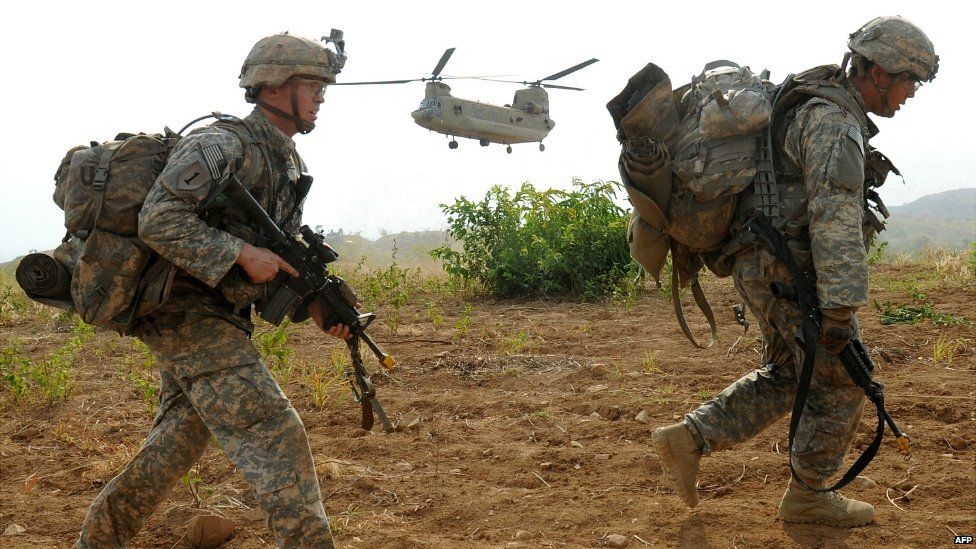 |
| Photo: Getty Images |
The Continental Army was founded on June 14, 1775, even before the United States was formally established by the Declaration of Independence. This marks the beginning of the history of the United States Armed Forces. In order to defend the new nation against the British Empire in the American Revolutionary War, the Second Continental Congress established the Continental Marines on November 10, 1775, and the Continental Navy on October 13, 1775.
Following the Treaty of Paris, which put an end to the War for Independence, these forces demobilized in 1784. On June 3, 1784, the Congress of the Confederation established the United States Army as it exists today. The present United States Marine Corps and Navy were established by the US Congress on July 11, 1798, and March 27, 1794, respectively. Each of the three services can be traced back to its corresponding Continental forebear. The Congress was given the authority to "raise and support armies," "provide and maintain a navy," and "make rules for the government and regulation of the land and naval forces" in 1787 when the Constitution was ratified. It also had the authority to declare war. The commander-in-chief of the US Armed Forces is the president.
The United States Life-Saving Service and the Revenue Cutter Service were combined on August 4, 1790, to form the United States Life-Saving Service, which later became the United States Coast Guard. The Aeronautical Division, U.S. Signal Corps, was founded on August 1, 1907, and was a part of the Army Air Forces until it was separated into an independent service under the National Security Act of 1947. This led to the creation of the United States Air Force, which became an independent service on September 18, 1947. From July 29, 1945, until its status as such was revoked on July 3, 1952, the United States Public Health Service Commissioned Corps was regarded as a branch of the US Armed Forces.
On December 20, 2019, the US Space Force was founded as a stand-alone agency. It is the first newly created branch of the American military since the 1947 founding of the independent U.S. Air Force, making it the sixth branch overall. Its beginnings can be traced to the establishment of Air Force Space Command, a significant command of the US Air Force, which was established on September 1, 1982.
Combatant commanders can still rely on the Army to supply them with a broad array of forces and capabilities that will help them win the war on terror, fulfill our obligations around the world, and form strong multinational coalitions. The Army helps with the following in addition to the War on Terror:
International drills that demonstrate our unwavering dedication to and leadership of the growing North Atlantic Treaty Organization and numerous other alliances:
-The defense of South Korea, Japan and many other friends, allies and partners
-Ongoing peacekeeping operation
-The security of our borders
-Operations and equipment to counter the flow of illegal drugs
Who Is in Charge of the 6 Military Branches?
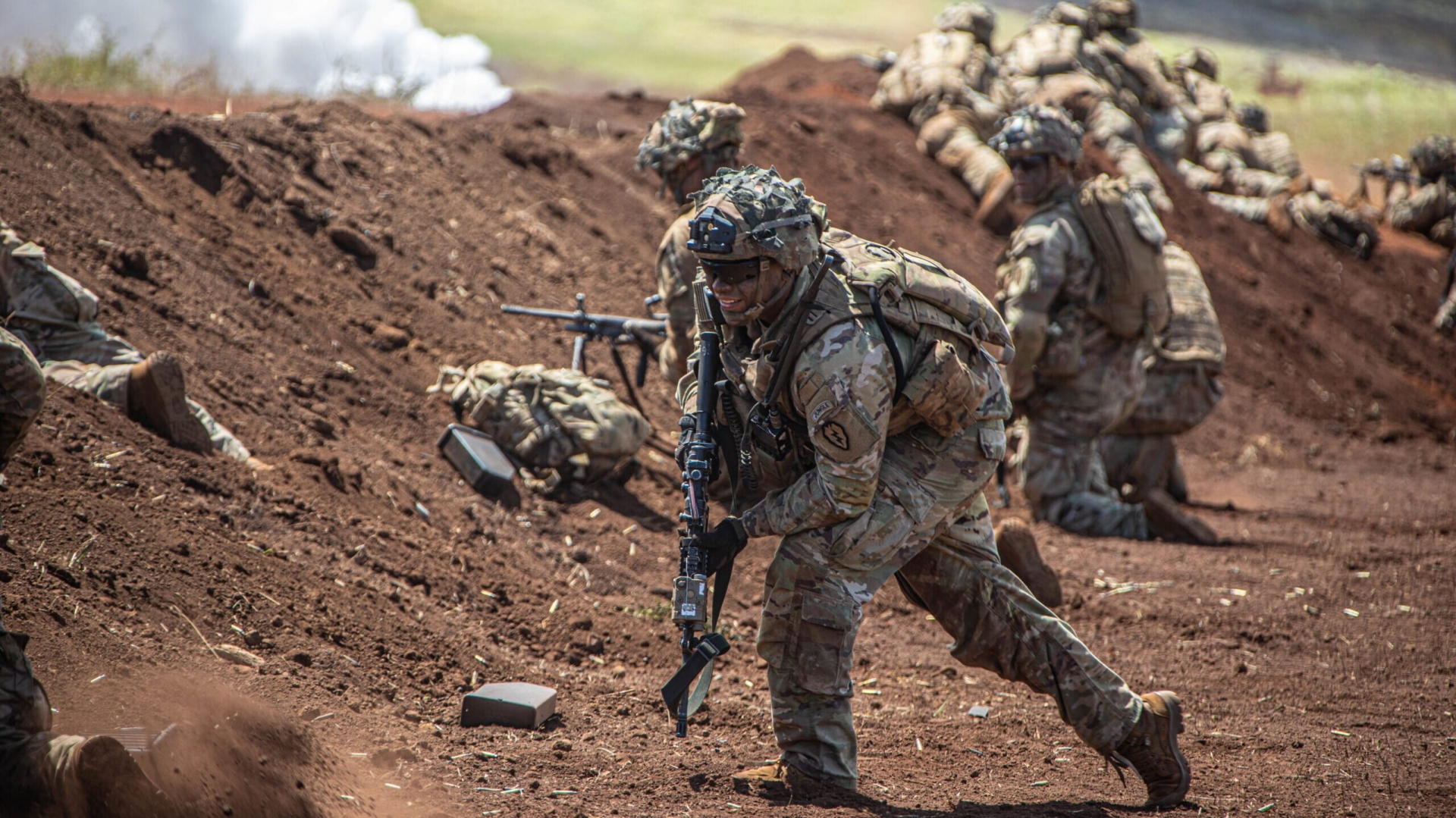 |
| Photo: Getty Images |
As commander in chief, the President of the United States makes all ultimate decisions. With the exception of the Coast Guard, which is governed by the Department of Homeland Security, all branches of the military are under the secretary of the Department of Defense (DoD). The DoD is the biggest "company" in the world, employing more than 2 million people in the civilian and military sectors.
What Are the Branches of the Military?
The overarching goal of US security and peace comprises specific missions for each branch of the armed forces. Apart from the six branches of the armed forces, the Army and Air National Guards perform unique roles.
Here's a summary:
Air Force and Air Force Reserve
The country's primary air and space power source. The USAF's main goal is to fly aircraft, choppers, and satellites.
One of the three military departments of the Department of Defense, the Department of the Air Force, is home to the U.S. Air Force, a branch of the armed forces. The civilian Secretary of the Air Force, who answers to the Secretary of Defense and is nominated by the President with Senate confirmation, is in charge of the Air Force through the Department of the Air Force. The Chief of Staff of the Air Force, who is one of the Joint Chiefs of Staff and has command over Air Force units, is the highest ranking military officer in the Air Force. Under the direction of the Air Force and Defense Secretaries, some Air Force elements are reassigned to unified combatant commands. While the Secretary of the Air Force and the Chief of Staff of the Air Force maintain administrative authority over their members, combatant commanders are granted operational authority over the forces that are assigned to them.
Air National Guard
As of right now, the Air National Guard is a distinct reserve branch of the US Air Force.
The air militia of every state in the union, the District of Columbia, the Commonwealth of Puerto Rico, the territories of Guam and the U.S. Virgin Islands, and the Air National Guard (ANG), commonly referred to as the Air Guard, is a federal military reserve force of the United States Air Force. It constitutes the National Guard of every state as well as the districts, commonwealths, and territories as applicable, together with the Army National Guard component of each of these entities.
When units of the Air National Guard are used under a state governor's jurisdiction, they are acting as militias. Nonetheless, Air National Guard units become an active component of the US Air Force if they are federalized by an executive order from the US President. The National Guard Bureau, a joint bureau of the Army and Air Force that is in charge of managing the US National Guard, administers them in tandem with the states.
Army and Army Reserve
The dominant land power. The Army generally moves into an area, secures it and instills order and values before it leaves. It also guards U.S. installations and properties throughout the world.
Army National Guard
A select group of warriors who commit a portion of their time to serving their country is the Army National Guard. The Constitution mandates that every state maintain its own Guard; in fact, it is the only military branch whose very existence is predicated on the Constitution.
Together with the Air National Guard, the Army National Guard (ARNG) is the United States Army's organized militia and federal military reserve force. They are concurrently affiliated with two distinct groups: the United States Army National Guard (as part of the federalized National Guard) and the Army National Guard of every state, the majority of territories, and the District of Columbia (also known as the Militia of the United States). Under the direction of the governors or governor-equivalents of each state, territory, and the District of Columbia, the Army National Guard is organized into subordinate units.
Coast Guard and Coast Guard Reserve
The Coast Guard's mission is primarily with domestic waterways. The Coast Guard does rescues, law enforcement, drug prevention and clears waterways.
Marine Corps and Marine Corps Reserve
The Marine Corps is known as the country's rapid-reaction force. They are trained to fight by sea and land, and usually are the first "boots on the ground." Marines are known as the world's fiercest warriors.
Navy and Navy Reserve
The Navy uses the sea to carry out most of its missions, but it also uses the air and land. It keeps the world's oceans safe for trade and travel by securing and guarding them. This promotes world peace and stability.
One of the eight uniformed services in the country is the United States Navy (USN), which is the maritime branch of the armed forces. As of 2015, the estimated tonnage of its active battle fleet alone exceeded that of the next 13 navies combined, which included 11 U.S. allies or partner nations, making it the largest and most powerful navy in the world. With eleven aircraft carriers in service, two new carriers under construction, and five more planned, it has the largest aircraft carrier fleet in the world and the highest combined battle fleet tonnage (4,635,628 tonne as of 2019). The United States Navy ranks third among the military service branches in the country in terms of manpower, with 336,978 members serving on active duty and 101,583 in the Ready Reserve. As of June 2019, it possessed over 3,700 operational aircraft and 290 deployable combat vessels.
Space Force
One of the eight uniformed services in the United States, the United States Space Force (USSF) is the only independent space force in the world and the space service branch of the U.S. Armed Forces. The Space Force is a component of the Department of the Air Force, one of the three military branches under civilian leadership in the Department of Defense, along with its sister branch, the U.S. Air Force. The Secretary of the Air Force, a civilian political appointee who answers to the Secretary of Defense and is nominated by the President with Senate confirmation, is in charge of the Space Force via the Department of the Air Force. Unless a Space Force officer is holding the position of Chairman or Vice Chairman of the Joint Chiefs of Staff, the most senior Space Force officer and the military head of the Space Force is the Chief of Space Operations. In addition to being one of the Joint Chiefs of Staff, the Chief of Space Operations oversees the Space Force's units.
The Space Force, the military's sixth branch, is currently and will remain in development for some time as numerous final decisions are made regarding uniforms, basing, and even recruiting.
United States Military Strengths
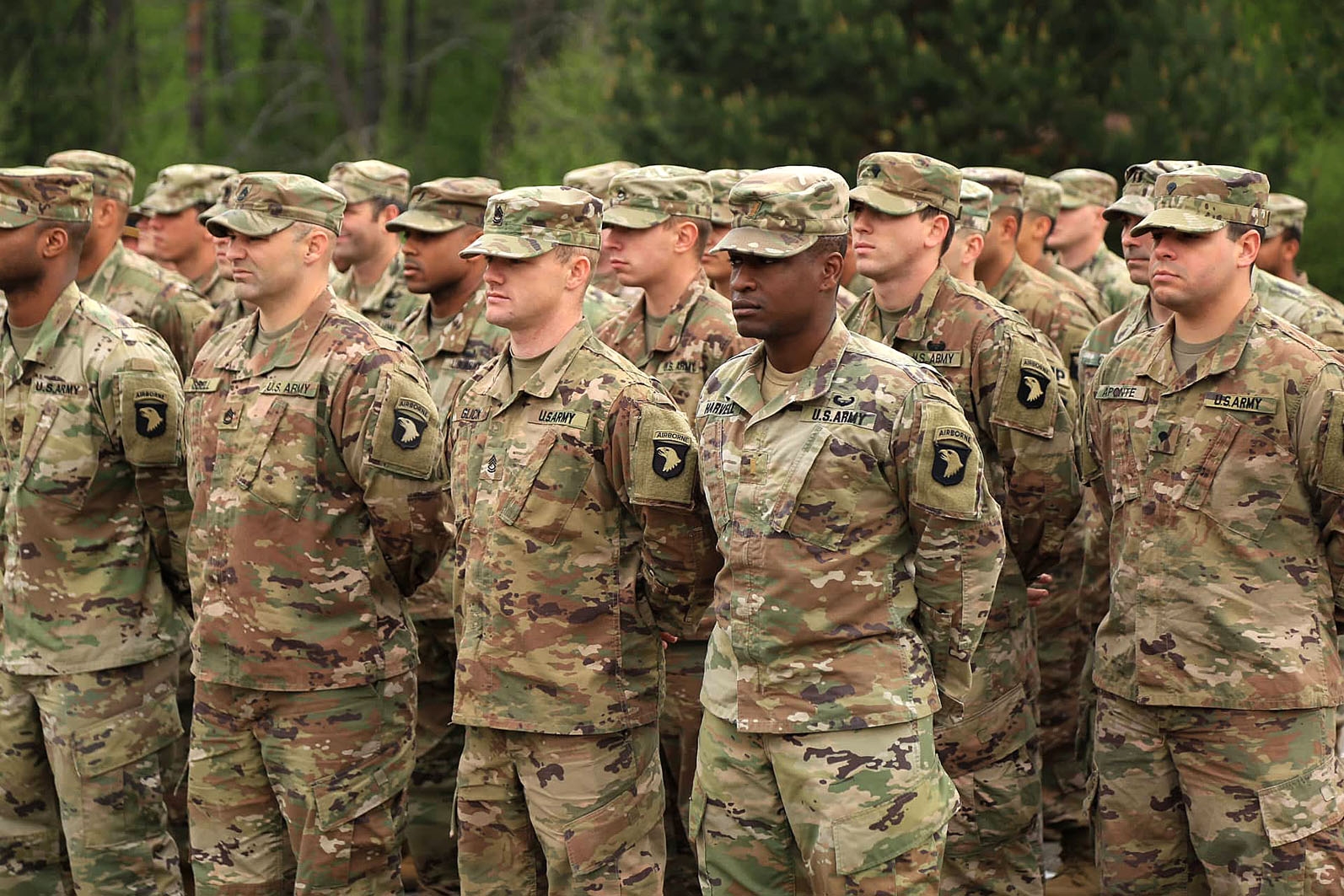 |
| Photo: Kyiv Post |
Out of the 140 nations taken into consideration for the yearly GFP review, the United States is ranked first. With a score of 0.0000, it is deemed "perfect." Its PwrIndx score is 0.0453.
The history of the United States has been significantly influenced by the U.S. Armed Forces since their founding during the American Revolutionary War. Through their successes in the First and Second Barbary Wars, they contributed to the creation of a feeling of national identity and unity. They were instrumental in preventing the Confederacy from breaking away from the republic during the American Civil War. The modern U.S. military structure was established by the National Security Act of 1947, which was enacted after World War II. The United States Air Force and the National Security Council were also established by the Act, along with the National Military Establishment, which is led by the Secretary of Defense. In 1949, it underwent an amendment that resulted in the Department of Defense replacing the National Military Establishment and the cabinet-level Departments of the Army, Navy, and Air Force merging into one entity.
When it comes to manpower, the U.S. Armed Forces rank among the biggest. They hire people from a sizable pool of compensated volunteers. Conscription has not been used since 1973, despite its historical usage. All male citizens and residents living in the United States between the ages of 18 and 25 are required to register with the Selective Service System, which maintains the authority to conscript males.
The United States Armed Forces are regarded as the strongest military force in the world. The United States had the largest military budget in the world in 2019 with $693 billion. It was responsible for 36% of global defense spending in 2018. Because of its massive budget and the resulting powerful and advanced technologies, the U.S. Armed Forces are able to project power and defend large areas of the world, including approximately 800 military bases outside of the country. Combined, the U.S. Navy and U.S. Marine Corps make up the second largest air force in the world, while the U.S. Air Force is the largest air force in the world by tonnage. The U.S. Coast Guard ranks as the 12th largest maritime force in the world in terms of size. The United States' military inventory consisted of roughly 14,061 aircraft as of FY2019. The only operational independent space force in the world is the U.S. Space Force.
Why Is US Military The Strongest In The World?
Whether it was just a coincidence or a result of his campaign's constant promises to "Make America Great Again," more Americans felt that the US military was the best in the world after Donald J. Trump was appointed Commander in Chief in 2016. The percentage of respondents who think the US military is the best in the world has varied since then, but it has always been higher than 50%. 58 percent of Americans thought that the United States was the world's leading military power in 2020.
The funding of the military, which accounts for 15% of the national budget, has never been a problem for the United States. That works out to $686 billion annually spent on weapons, tanks, boats, jets, and other equipment. It has continued to grow as well. The military received $750 billion in funding in 2020, and in 2021 there will probably be an increase.
Although the number of soldiers in an army plays a significant role in its power, the United States' air and naval superiority really set us apart. The U.S. military operates over 900 air transports, 967 attack helicopters, nearly 2,100 fighters, and special purpose aircraft. The Apache Attack Helicopter, A-10 Thunderbolt II, and B-2 Spirit Stealth Bomber are a few noteworthy aircraft. Since drones are becoming more and more popular for eliminating High-Value Targets, they also shouldn't be disregarded.
The Navy now has ninety-one Navy destroyers and eleven aircraft carriers stationed at Oceanside. Aircraft carriers are essential to preserving combat effectiveness in a worldwide conflict.
The US's speed at developing and releasing new weaponry technology, such as David's Sling, smart bullets, and possibly even exosuits like the TALOS project, is the next important factor to consider. There are probably top-secret projects under development that, even after they are put into operation, will stay under wraps. The sheer volume of military advancements over the last 81 years is difficult to even begin to describe.
The elite training that the special forces receive comes last. Although there is less emphasis on this now that warfare is shifting to drones and proxy conflicts, training is still important. Only the strongest and most skilled can survive what can be an arduous and life-threatening experience. They are excellent at combat tactics, cooperating with one another, and avoiding collateral damage. The US can thank their special forces for taking out national security threats such as Osama Bin Laden.
United State Army Weapons
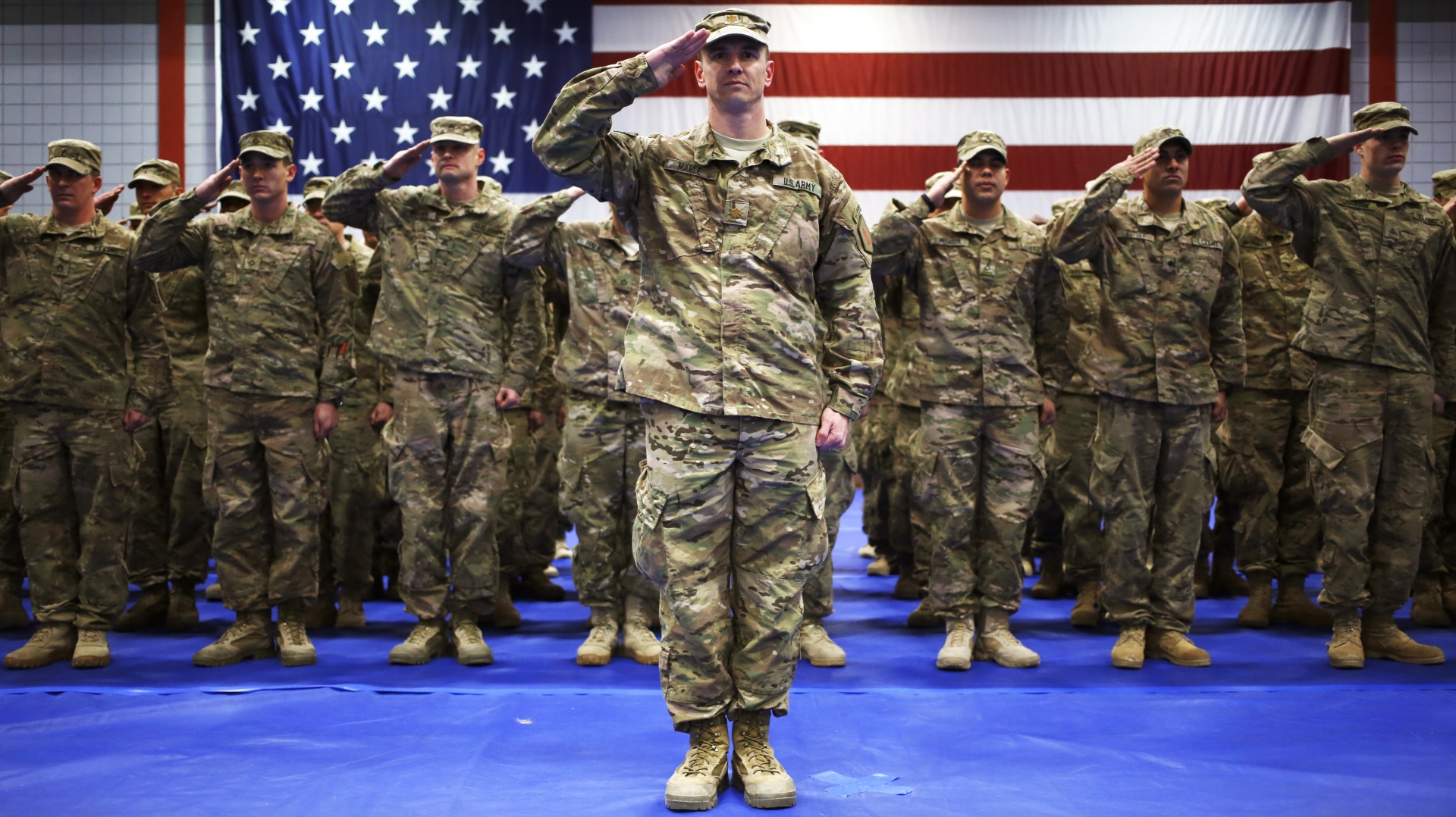 |
| Photo: NPR |
Individual weapons
The US Army uses a variety of weaponry to deliver light firepower at close range. The M4 carbine, a more compact version of the M16 rifle, and the 7.62×51mm FN SCAR for Army Rangers are the two most widely used weapon types in the army. The 9 mm M9 pistol, although the M11 pistol is also in use, is the main sidearm in the U.S. Army. The M17 will take the place of both handguns as part of the Modular Handgun System initiative. Additionally, hand grenades like the M67 fragmentation and M18 smoke grenades are carried by soldiers.
To provide suppressive fire at the squad level, numerous units are augmented with a range of specialized weapons, such as the M249 SAW (Squad Automatic Weapon). The grenade launcher M320 provides indirect fire. For close-quarters fighting and door breaching, the Mossberg 590 Shotgun or the M1014 Joint Service Combat Shotgun are utilized. M14EBR is only used by authorized marksmen. The M2010 Enhanced Sniper Rifle, the M110 Semi-Automatic Sniper Rifle, and the M107 Long Range Sniper Rifle are used by sharpshooters.
Crew-served weapons
To deliver powerful firepower at longer ranges than individual weapons, the army uses a variety of crew-served weaponry.
The M240 is the standard Medium Machine Gun used by the U.S. Army.[166] Typically, the M2 heavy machine gun is installed on a vehicle. Motorized units are the primary users of the 40 mm MK 19 grenade machine gun.
When heavier artillery is either unavailable or inappropriate, the U.S. Army employs three different types of mortar to provide indirect fire support. The 60 mm M224 is the smallest of these and is typically assigned to infantry companies. An 81 mm M252 mortar section usually supports infantry battalions at the next higher echelon. The 120 mm M120/M121, the largest mortar in the army's arsenal, is typically used by mechanized units.
For light infantry units, towed howitzers such as the 155 mm M777 and the 105 mm M119A1 provide fire support.
The U.S. Army equips infantry with an Anti-Armor Capability by employing a range of direct-fire rockets and missiles. Up to 500 meters away, the AT4 unguided projectile can destroy bunkers and armor. The FIM-92 Stinger is a heat-seeking anti-aircraft missile that is launched from the shoulder. BGM-71 TOW and FGM-148 Javelin are guided missiles designed to counter tanks.
Vehicles
Mechanized warfare is a priority in U.S. Army doctrine. As of 2009, it had the highest vehicle-to-soldier ratio globally. The High Mobility Multipurpose Wheeled Vehicle (HMMWV), also known as the Humvee, is the most frequently used vehicle in the army. It can be used for a variety of tasks, including ambulance, weapons platform, and cargo/troop carrier. Although they use many different kinds of combat support vehicles, the HEMTT vehicle family is one of the most widely used models. The primary battle tank of the army is the M1A2 Abrams, and the standard infantry fighting vehicle is the M2A3 Bradley. The M113 armored personnel carrier, the Stryker, and various Mine Resistant Ambush Protected (MRAP) vehicle types are among the other vehicles.
The M109A6 self-propelled howitzer and the M270 Multiple Launch Rocket System (MLRS), both mounted on tracked platforms and attached to heavy mechanized units, are the main artillery weapons in the U.S. Army's arsenal.
Although the US Army Aviation Branch flies a few fixed-wing aircraft, its primary aircraft type is rotary-wing. These consist of the CH-47 Chinook heavy-lift transport helicopter, the UH-60 Black Hawk utility tactical transport helicopter, and the AH-64 Apache attack helicopter. Plans for restructuring call for 750 fewer aircraft, down from seven to four types. In order to replace the Guardrail ISR (intelligence, surveillance, and reconnaissance) aircraft, the Army is assessing two fixed-wing aircraft demonstrators: ARES and Artemis. The Army committed to reserving its fixed-wing aviation role for administrative mission support (light, unarmed aircraft that are unable to fly from forward positions) under the terms of the Johnson-McConnell agreement of 1966. The Army is assigning one company of MQ-1C Gray Eagle drones to every Active Army division in order to provide UAVs.
Armed forces of the United States - Statistics
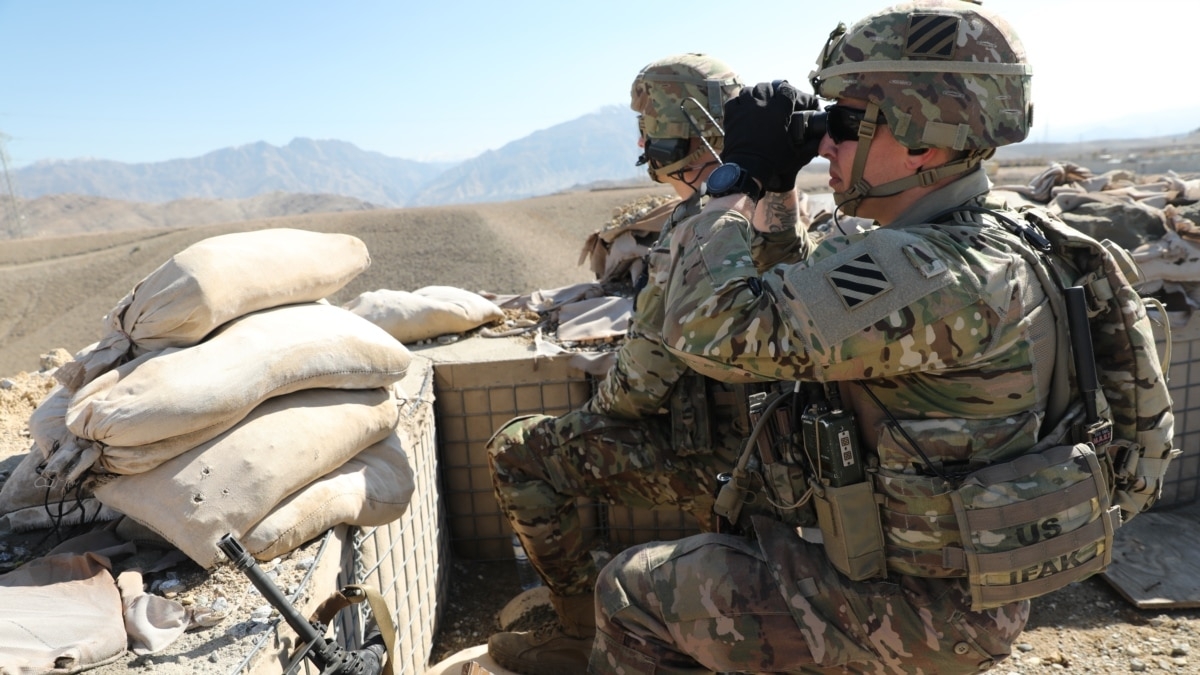 |
| Photo: RFE |
As of 2021, 69 percent of Americans still had faith in the US military, making it one of the most trusted institutions in the country.
This degree of public support follows the U.S. military's extensive participation in several military operations in the Middle East. The public's favorable perception of the military stems in part from the sacrifices made by their fellow citizens in Iraq and other war zones. This has occasionally involved making the ultimate sacrifice.
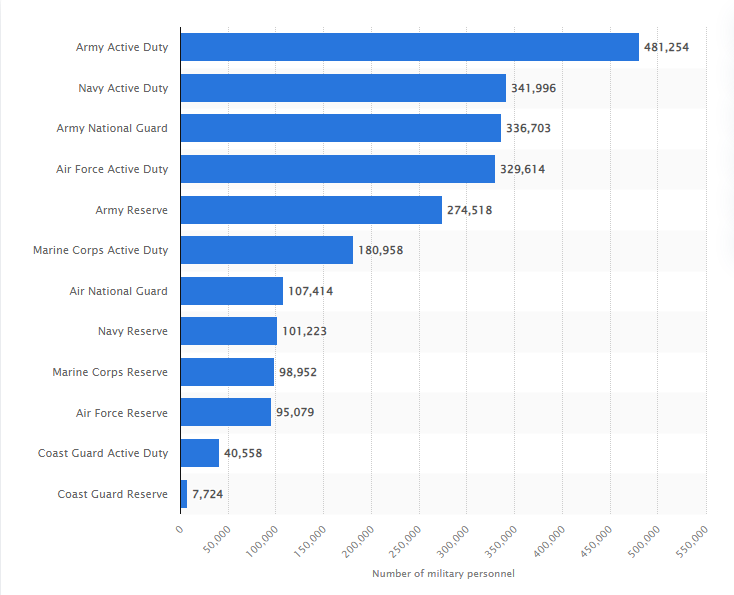 |
| Active and reserve U.S. military force personnel numbers in 2020, by service branch and reserve component. Photo: Statista |
| America is known the world over for being a strong military power, and Americans tend to have a lot of confidence in the military. The United States might not have the largest military in the world, but it outpaces all other countries in defense spending. |
Serving one's country
Nevertheless, not all service members put themselves through arduous training and risk their lives for their nation out of pure patriotism. There are worries that people from more disadvantaged socioeconomic backgrounds are more likely to find themselves in the firing line on a foreign continent, even though a career in the military is occasionally the best option financially.
All the same, there is no doubting the strength of the American military. The U.S. Army, Navy, and Air Force have the next-highest numbers of active personnel. Even with a force strength of over 1.4 million in 2021, China still has a significant advantage over the US military. When it comes to military spending, this is one area where the US really excels. In 2021, this came to 2,186 US dollars per person. Spending doesn't seem to be slowing down anytime soon, with projections putting outlays at $915 billion in US dollars by 2031.
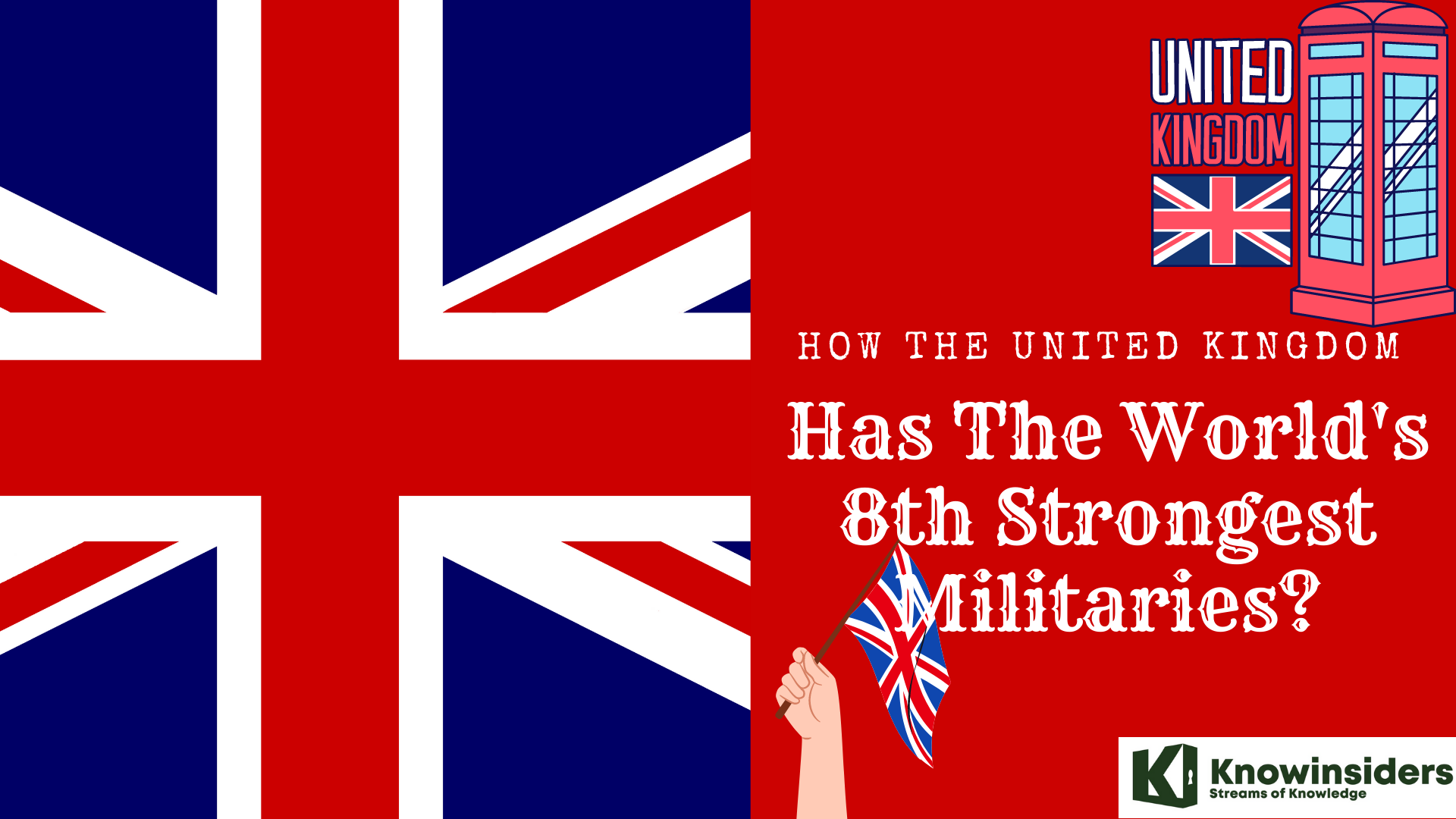 British Army - Top 8th Strongest Militaries In The World British Army - Top 8th Strongest Militaries In The World United Kingdom is ranked 8 of 140 out of the countries considered for the annual Global Firepower Index (GFP) review. How UK Has The 8th ... |
 Ukrainian Army - Top 22nd Strongest Militaries in The World Ukrainian Army - Top 22nd Strongest Militaries in The World The Armed Forces of Ukraine is the military of Ukraine. Here is the military history of Ukraine, and how this country has become the world's ... |
 Russian Army - Top 2nd Strongest Militaries in the World Russian Army - Top 2nd Strongest Militaries in the World Russia is ranked 2 of 140 out of the countries considered for the annual The Global Firepower Index (GFP) review. We will learn about the ... |
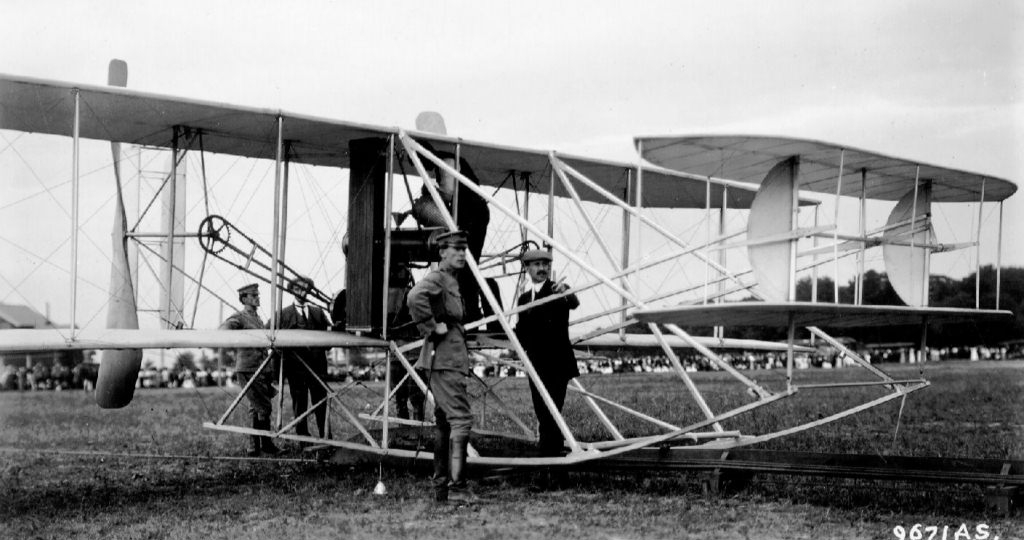 What Is The First Military Airplane In The World? What Is The First Military Airplane In The World? The 1909 Wright Military Flyer is the world's first military airplane. Read on to know its history. |


